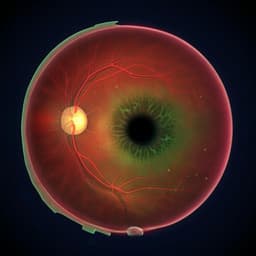
Medicine and Health
Breast Cancer Screening Using Clinical Breast Examination: A Cost-Effectiveness Analysis for South Africa
S. D. Masuku, O. Mandrik, et al.
WHO emphasizes screening to reduce advanced cancer; South Africa recommends twice-yearly clinical breast examinations (CBEs) for women 40–69. This study conducted by Sithabiso D. Masuku, Olena Mandrik, Noreen D. Mdege, Gauravi Mishra, Richard Muwonge, Gesine Meyer-Rath, Naomi Lince-Deroche, and Alan Brennan models scaling CBE coverage from 5% to 25% and 75%, finding modest mortality reductions (0.7% and 2.3%), DALYs averted, and cost-per-DALY estimates—and concludes life-years are saved but not cost-effective under the $3,015 threshold.
~3 min • Beginner • English
Introduction
Screening and early diagnosis are key strategies to reduce advanced cancer incidence and mortality. Five-year relative survival for breast cancer is high when diagnosed before metastasis but drops sharply for metastatic disease. In LMICs, survival rates are substantially lower for metastatic breast cancer, underscoring the need for early detection programs. Mammography is the gold standard that reduces mortality in high-income countries but is often unaffordable or unavailable in LMICs. Clinical breast examination (CBE), due to its low cost, is considered a promising early detection approach by WHO and has shown downstaging benefits in trials in India. Downstaging shifts diagnosis toward earlier stages, increasing survival by enabling more and less complex treatment options and potentially lowering healthcare costs. In South Africa, late-stage (stage 3) presentation is common. Since 2017, the Breast Cancer Control Policy (BCCP) has recommended twice-yearly CBEs for asymptomatic women aged 40 to 69 years at public-sector primary healthcare clinics. Actual coverage is uncertain due to a lack of registries. The study estimates the impact of scaling up CBE screening coverage on breast cancer mortality, screen detection rates, and cost-effectiveness in South Africa.
Literature Review
Prior evidence indicates mammography is the only screening modality shown to reduce breast cancer mortality in high-income countries, but costs are prohibitive for many LMICs. WHO considers CBE a promising low-cost early detection strategy where mammography is not feasible. Cluster randomized trials in Mumbai and Trivandrum, India, demonstrated that CBE-based screening downstages disease at diagnosis. Reported CBE sensitivity ranges from 40% to 69%, lower than mammography benchmarks. Studies also show practitioner skill and standardized protocols strongly influence CBE performance. These findings support evaluating CBE-based strategies in LMIC settings such as South Africa.
Methodology
Study design: A two-part Microsoft Excel-based cohort model followed South African women’s breast health. Part 1 (decision tree) estimated screen-detected and symptomatic cancers at baseline and scaled-up coverage levels and associated screening and diagnostic costs, following national clinical pathways. Part 2 (state-transition model) tracked women diagnosed with breast cancer (screen-detected or not) over their remaining lifetime, assuming relapse/progression to stage IV only. Population: Women aged 40–69 in 5-year cohorts (40–44, 45–49, 50–54, 55–59, 60–64, 65–69) served by the public sector (assumed 80%) entered annually. The model incorporated births, background mortality, incidence, screening compliance, screen positivity, number of CBEs per annum, and sensitivities of CBE and mammography. Population estimates were based on Statistics South Africa mid-year 2020 with 1.30% annual growth. Intervention and comparators: Baseline targeted 5% annual screening coverage, remaining constant for 5 years. Scenario 1 increased coverage by 5% annually to 25% by year 5. Scenario 2 increased coverage by 17.5% annually to 75% by year 5. Although a full no-screening baseline was not modeled (given rights to CBEs), a comparison of no screening versus baseline was conducted to contextualize economic efficiency. Data inputs: Downstaging effects were derived from a meta-analysis of two cluster RCTs in India, indicating downstaging of late-stage cancers of 9.7% (ages 50–69) and 10.10% (<50). The model allowed stage shifts by one category (IV→III, III→II, II→I) with sensitivity analysis exploring two-stage shifts. Key parameters included age-specific incidence (2016), stage distribution for non-screen-detected cancers, stage-specific case fatality, sojourn times, disability weights (adjusted for relapse to stage IV), compliance and screen positivity by age band, CBE sensitivity (54.1%; range 40–69%), mammography sensitivity (87%), biopsy method distribution, public sector coverage (80%), and inflation (6.7%). Costs: Provider-initiated screening costs were informed by HE2RO work; diagnostic costs (personnel, equipment, consumables, lab tests, overheads) from a Johannesburg microcosting study; treatment costs per episode (10–12 months) from Groote Schuur Hospital chemotherapy-focused estimates (consultations, labs, scans, imaging, administration). Noncancer lesions assumed no treatment costs. Costs were from the healthcare payer perspective in 2022 USD (US$1 = ZAR 18.12), adjusted for inflation, with 6.25% discounting for costs and health effects. Outcomes: Effectiveness measured as DALYs averted (sum of years of life lost and years lived with disability). Incremental cost-effectiveness ratios (ICERs) were calculated versus baseline (and versus no screening where noted) and compared against South Africa’s opportunity cost-derived threshold (OCCET) of $3,015 per DALY averted. Additional metrics included cost per woman screened and 5-year screen detection rates per 1000 women screened. Sensitivity analyses: Deterministic one-way sensitivity analyses varied screen positivity, downstaging, treatment costs, CBE sensitivity, one- vs two-stage shifts, baseline screened proportion, discount rate, and CBE cost. Probabilistic sensitivity analysis (PSA) used Monte Carlo sampling (n=2000) from parameter distributions to generate joint uncertainty, summarized on cost-effectiveness planes and acceptability curves.
Key Findings
- Five-year screen detection rates per 1000 women screened: scenario 1 = 2.39; scenario 2 = 2.08 (as reported). Another section reported the reverse ordering; values are approximately 2.4 and 2.1 per 1000. - Coverage and uptake: Baseline targeted 5% coverage with 3.5–3.6% actual uptake; scenario 1 targeted 25% with 17.3–18% uptake by year 5; scenario 2 targeted 75% with 51.8–53.9% uptake by year 5. - Mortality impact: Scenario 1 reduced years of life lost by ~0.71% (≈0.7% reduction in breast cancer mortality); scenario 2 by ~2.25% (≈2.3% reduction). - Numbers screened over 5 years: baseline 1,144,834; scenario 1 3,460,445; scenario 2 9,249,475. - True positives among screen-positive women after diagnostic workup: baseline 3.9%; scenario 1 4.2%; scenario 2 3.7%. - Screening and diagnostic costs (5-year totals): baseline $34,473,612; scenario 1 $104,741,331; scenario 2 $279,091,131. - Treatment costs (diagnostics + chemotherapy over 5 years): baseline $47,710,059; scenario 1 $46,932,942; scenario 2 $45,030,244 (marginal decrease due to downstaging). - Average discounted cost per woman screened: approximately $30 across baseline and scale-up scenarios. - Cost of screening/diagnosis per screen-detected breast cancer: baseline $13,717; scenario 1 $12,653; scenario 2 $14,476. - DALYs and ICERs: Compared with no screening, baseline averts 1,645 DALYs at $20,341 per DALY averted. Scenario 1 averts 3,823 DALYs at $18,547 per DALY (vs no screening) and $17,776 per DALY (vs baseline). Scenario 2 averts 12,165 DALYs at $19,646 per DALY (vs no screening) and $19,552 per DALY (vs baseline). - PSA ranges of ICERs vs baseline: scenario 1 $2,118–$51,778; scenario 2 $3,513–$52,088 per DALY averted; all simulations in the northeast quadrant (more effective and more costly). - Deterministic sensitivity: Outcomes most sensitive to downstaging assumptions and CBE sensitivity; least sensitive to CBE and treatment costs.
Discussion
Scaling up CBE-based breast cancer screening in South Africa increases life years saved and modestly reduces treatment costs due to downstaging, but it is not cost-effective under the national opportunity cost-derived threshold of $3,015 per DALY averted. Scenario 1 (gradual scale-up to 25% coverage) yields better economic efficiency than scenario 2 (aggressive scale-up to 75%). Decision-making should consider the government’s willingness to pay, broader healthcare priorities, and system capacity. Evidence from other LMICs (e.g., Morocco) similarly finds CBE-based screening not cost-effective compared with no screening, suggesting broader relevance. Model outcomes were chiefly driven by downstaging success and CBE sensitivity, emphasizing the importance of implementation quality, training, and standardized protocols. While detection rates and per-woman costs varied slightly by scenario and age band, overall screening scale-up requires substantial investment and may increase demand for diagnostic and treatment services. Establishing minimum care standards and considering whether early diagnosis among symptomatic patients might be a more cost-effective early detection approach are essential for equitable, effective policy.
Conclusion
Scaling up clinical breast examination screening for women aged 40–69 in South Africa saves life years but is not cost-effective under the $3,015 per DALY averted threshold. Policy decisions should weigh budget constraints, competing health priorities, and health system capacity. Before scale-up, it is essential to establish minimum care standards and assess the most cost-effective early detection strategies. Screening initiatives will likely increase demand for diagnostic and treatment services, necessitating readiness of the health system.
Limitations
- Efficacy parameters for downstaging derived from two Indian RCTs; breast cancer incidence differs between India and South Africa, though the Indian trial cities had relatively high incidence comparable to South Africa. - Stage distribution (non-screen-detected cases) and treatment cost inputs were sourced from single provinces (Eastern Cape; Johannesburg), which may not represent national averages. - Primary treatment cost analysis focused on chemotherapy-related costs; comprehensive care costs (surgery, radiation, endocrine therapy, trastuzumab, follow-up, palliative care, reconstruction) were not included. Sensitivity analysis with broader cost estimates showed marginal ICER impacts. - Capacity-building and programmatic screening-related costs (training, media promotion, system strengthening) were excluded and would likely increase ICERs. - Assumes uniform access and implementation across populations; real-world disparities (rurality, socioeconomic barriers, workforce/infrastructure limitations) may affect equity and effectiveness. - CBE has lower sensitivity than imaging-based methods and is highly dependent on practitioner skill; inadequate training can substantially reduce sensitivity. - Model assumed 100% treatment uptake among breast cancer patients; trial data indicated 92% uptake for screen-detected cases, which would increase ICERs if modeled. - No direct South Africa-specific mortality reduction estimates for CBE screening; mortality impact inferred via downstaging as a proxy.
Related Publications
Explore these studies to deepen your understanding of the subject.







